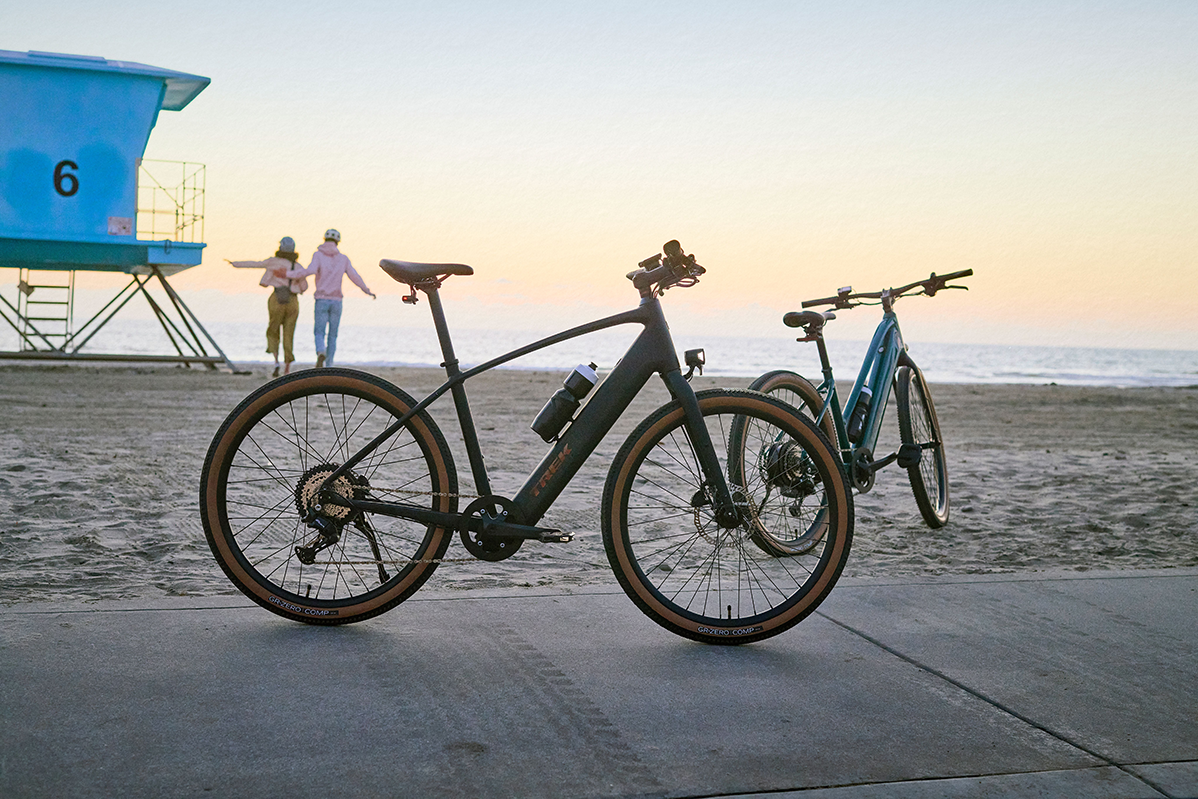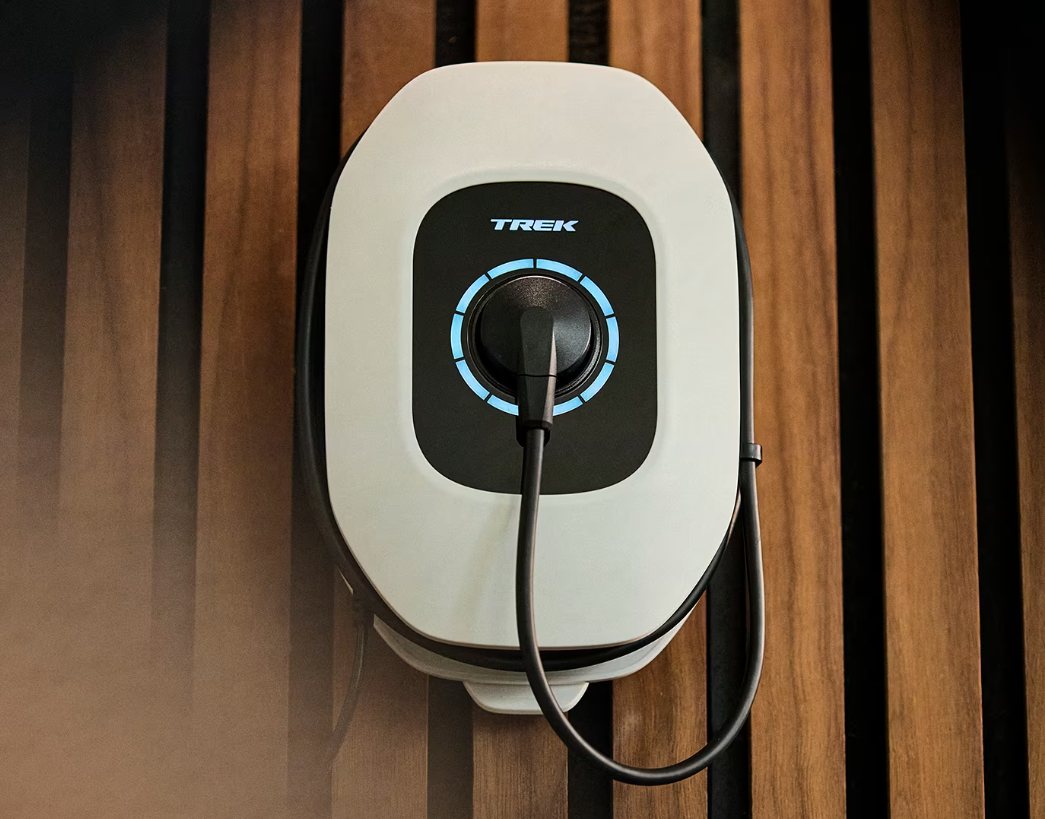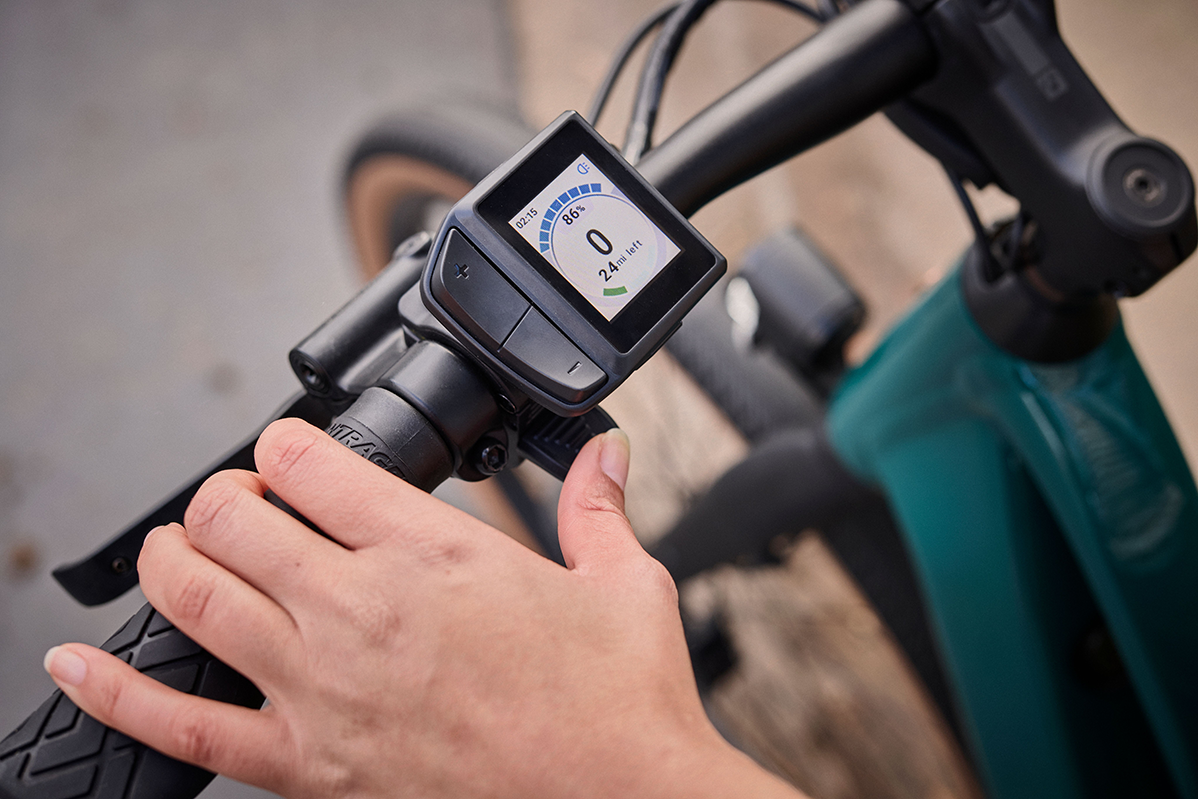Trek FX+1 First Take Review | A New Chapter for Trek
A throttle and a $2K price point? Trek just fired a shot across the bow of new-age e-bike brands. With a combination of crowd-pleasing features and serious name recognition, the FX+1 offers what people have been asking for from legacy brands.

Even one of the world’s biggest cycling brands still has new ground to break. Trek’s latest release, the FX+1, marks a first: the addition of a throttle. And at a launch price of $1,999, this is the kind of price we’re used to seeing on clearance—not on debut.
Throttle-enabled e-bikes aren’t new, but legacy brands have largely been slow to adopt the feature. So this move by Trek, especially at such a competitive price, feels like a clear message to newer brands like Aventon, Lectric, Ride1Up, and others that have filled this market demand in recent years.
Trek has kept what’s worked in the FX series: a lightweight aluminum frame, well-balanced geometry for a nimble ride, and a motor that’s setup to deliver a precise experience—not overpowering the ride. Now with a throttle, you get more flexibility for how you ride—whether it’s to help start from a stop, assist on hills, or just take a break and cruise.
Other highlights include a color display, integrated brake lights and turn signals, a detailed Trek Central app for advanced ride metrics and navigation, and a standout charging setup with a magnetic charger and wall-mountable unit featuring status LEDs—it looks more like an EV charger than a traditional bike plug.
The Trek FX+ 1 comes in both mid-step and high-step frames, 20 or 28 mph top speed variants (for California compliance), and a variety of colors depending on which frame you pick—the FX+1 brings a lot to the table. At this price, it’ll be interesting to see how it stacks up against the younger, value-focused brands.
Trek FX+1 Motor & Battery: Plenty of Power and Charging Tech That Excites
The FX+1 promises to be one of the most powerful models in the FX family to date. Its 500W Hyena rear hub motor delivers 60Nm of torque—higher output than both the FX+ 2 and FX+ 7. While the FX+2 focused on ultra-natural, lightweight assistance, and the FX+7 used a mid-drive setup (which makes direct comparisons tricky), the FX+1 looks poised to deliver a stronger, ‘easier’ ride.
The motor pairs with a torque sensor to provide a smoother, more intuitive experience. Rather than simply detecting pedaling like a cadence sensor, this setup adjusts power dynamically based on how hard you’re pushing on the pedals. So it’ll keep things fairly natural, but there seems to be an emphasis on approachability and the option to get extra power when needed (hence the throttle).
Powering the motor is a 520Wh integrated downtube battery. It’s not designed for easy removal (dealers can remove it, but it’s not user-friendly for daily charging off the bike), which is a bit of a letdown. Still, with a Trek-quoted range of up to 50 miles, it should hold up well for most commutes and casual rides.
Trek is also introducing a new EasyMag charger. It uses a magnetic connector to reduce trip hazards and protect both rider and equipment—something anyone who’s ever tripped over a charging cable will appreciate. The charger can be wall-mounted and features a glowing LED ring that shows charge status at a glance. It gives off electric car vibes in all the best ways, but it’s still designed to be portable and easily detached from the wall mount.
Lastly, the Trek Central app ties the motor and battery systems together. You can tune motor output, estimate throttle and assist range, and even activate a long-term storage mode to help protect battery health during off-seasons.
Trek FX+ 1: The Rest of the Spec
This may be one of Trek’s most affordable e-bikes ever, but it still offers a robust spec sheet.
The drivetrain features a Shimano mixed setup with a 40t chainring and an 11-45t 8-speed cassette, offering a wide 410% gear range. That means solid climbing capability and enough speed without ghost pedaling—especially important considering the torque sensor.
Braking is handled by Rush 2-piston hydraulic disc brakes on 180mm rotors. Given the bike’s light 48 lb weight, some brands might have opted for mechanicals here, but we’re glad Trek didn’t. We’re strong advocates of hydraulic brakes on nearly all e-bikes, and their inclusion here is a win.
Lighting and visibility features are another strong point. A 180-lumen headlight with side-view channels improves visibility, and the seatpost-mounted taillight includes brake light and turn signal functions. There are also mounts for fenders and a rear rack, with compatibility for Trek’s bag and gear accessories.
The FX+1 includes a color display for quick access to metrics and power level adjustments. Tires are Trek’s Bontrager GR0 Comp in 650x50mm—essentially a hybrid gravel tire with a smooth center tread for efficiency and knobbier shoulders for grip on loose surfaces.
The setup would be passable for light gravel, but it’s clearly optimized for paved commuting and leisure rides.
Burning Questions We Want Answered
There’s plenty we’re excited to test. Our review unit is on the way, and we’ll be diving into performance soon and we’ll be eager to see how it handles.
Trek has subtly shifted its tone in marketing the FX+1. Historically, it emphasized natural-feeling rides despite motor assistance. This time, the language leans more into making rides easier. Will this feel noticeably more peppy? There’s enough muscle in the motor for it anyway. We’ll find out soon.
The FX+1 is also heavier than previous FX models. While we trust Trek’s geometry and ride feel, we’re curious to see how the added weight affects handling.
And then there’s the broader, long-term industry question: how will the competition react? A throttle and $2K MSRP aren’t new—but when they’re coming from a powerhouse like Trek, it’s a different ballgame.
Specialized made a similar move with the Globe Haul ST—offering a hub drive and optional throttle—but it leaned more into utility-focused styling and launched closer to $3K.
Trek making a classic bike frame and stepping into the $2K space—long dominated by brands that weren’t on most consumers’ maps 10 years ago—could mark a major shift. Will other legacy players follow? How will Aventon, Ride1Up, and Lectric respond?
We’ll be digging into all of this in our full FX+1 review. Got questions you want us to answer? Drop them in the comments, and we’ll tackle them in the full review coming soon.







